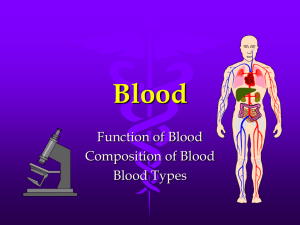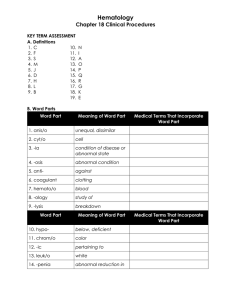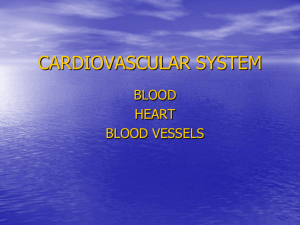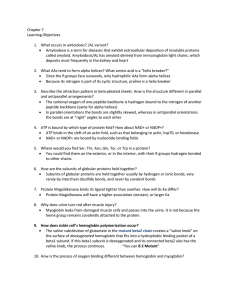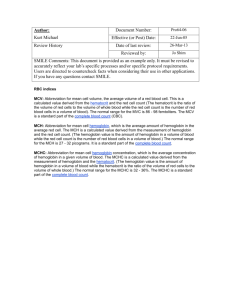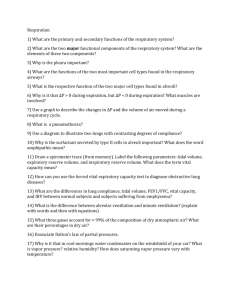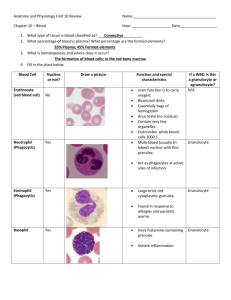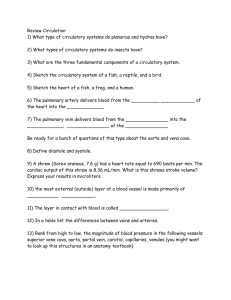Blood Components Lab: Identification & Analysis
advertisement
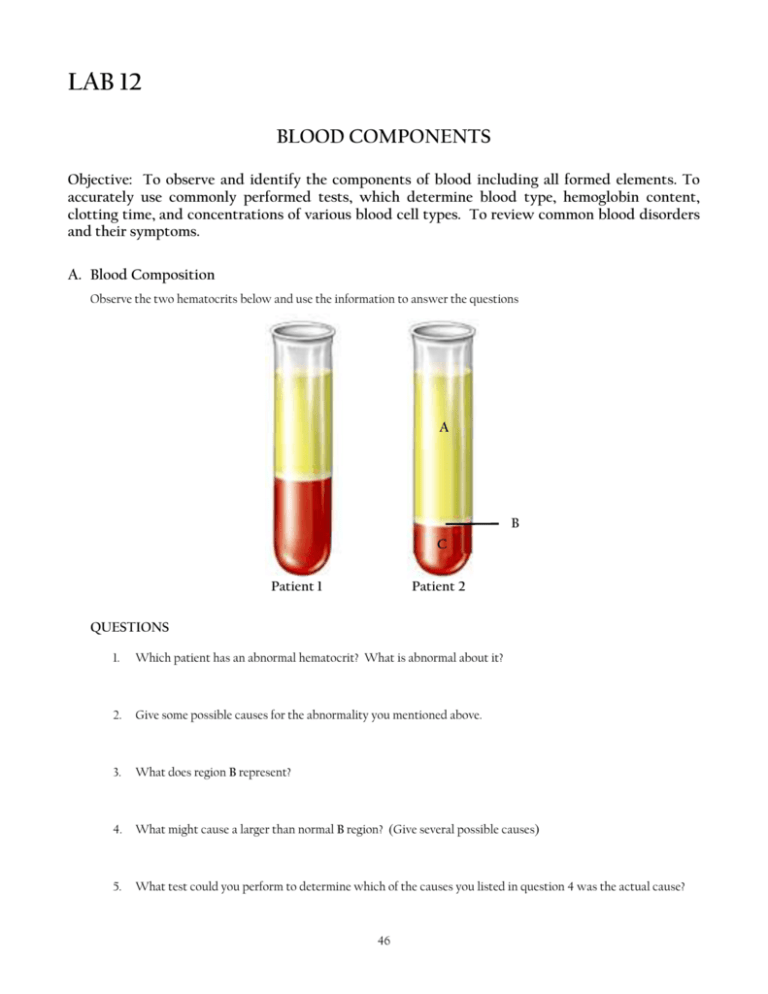
LAB 12 BLOOD COMPONENTS Objective: To observe and identify the components of blood including all formed elements. To accurately use commonly performed tests, which determine blood type, hemoglobin content, clotting time, and concentrations of various blood cell types. To review common blood disorders and their symptoms. A. Blood Composition Observe the two hematocrits below and use the information to answer the questions A B C Patient 1 Patient 2 QUESTIONS 1. Which patient has an abnormal hematocrit? What is abnormal about it? 2. Give some possible causes for the abnormality you mentioned above. 3. What does region B represent? 4. What might cause a larger than normal B region? (Give several possible causes) 5. What test could you perform to determine which of the causes you listed in question 4 was the actual cause? 46 B. Blood Histology Observe the preserved blood slide. Identify the following formed elements and write down the function of each: 1. Erythrocyte – 2. Granulocytes: 3. 4. a. Neutrophil – b. Eosinophil – c. Basophil – Agranulocytes: a. Lymphocyte – b. Monocyte – Thrombocyte – Label the formed elements below: 5. 6. 7. 8. 9. 10. 11. 47 QUESTIONS 1. Which of the above formed elements would most likely be elevated in number with each of the following conditions? a. Mononucleosis – b. Bacterial infection – c. Allergic reaction – d. Parasitic invasion – C. Blood Types Obtain a blood typing kit and use it to determine your blood type (include Rh results). Record the results below and answer the following questions. Your blood type __________________ QUESTIONS 1. What is an antigen? Where would you find antigens in blood? 2. What antigens are present in type O negative blood? What type of antibodies would you expect to find in type O negative blood? Why are these people often called universal donors? 3. What is the Rh factor? What does it mean to be Rh positive? 4. What is erythroblastosis fetalis? Explain the cause and results. 5. What type of antibodies would you expect to find in type AB positive blood? Why? D. Hemoglobin Content Use the Tallquist paper and hemoglobin charts to determine the hemoglobin content of your blood. Record the reading below and answer the questions. Your hemoglobin concentration ________________ 48 QUESTIONS 1. Was your hemoglobin reading in the normal range? If not, was it high or low? 2. How do hemoglobin concentrations vary between males and females? 3. What might cause an abnormally low hemoglobin reading? E. Hemostasis Review the process of hemostasis in your text. Learn the major factors involved in the clotting process. Answer the questions below. QUESTIONS 1. What is considered a normal clotting time? How can this be easily tested? 2. What is hemophilia? How do you get it? What is the most common cause? 3. What is a clotting factor? Where are most of them produced? Where do you find them? F. Differential White Cell Count Perform a sample differential white blood cell count by scanning your blood cell slide. On high power, make at least three passes across the width of your slide. Identify each Leukocyte as you scan and mark each one on the table below. Neutrophils Eosinophils Basophils Lymphocytes Monocytes Totals Percent QUESTIONS 1. Which cell type would you expect to be most numerous in a differential count? Was this cell type most numerous on your slide? If not, explain what may have caused the unexpected results. 49 2. Which cell type would you expect to be the least numerous? 3. When might you need to use a differential count? 4. What is the pH of blood under normal conditions? 50
